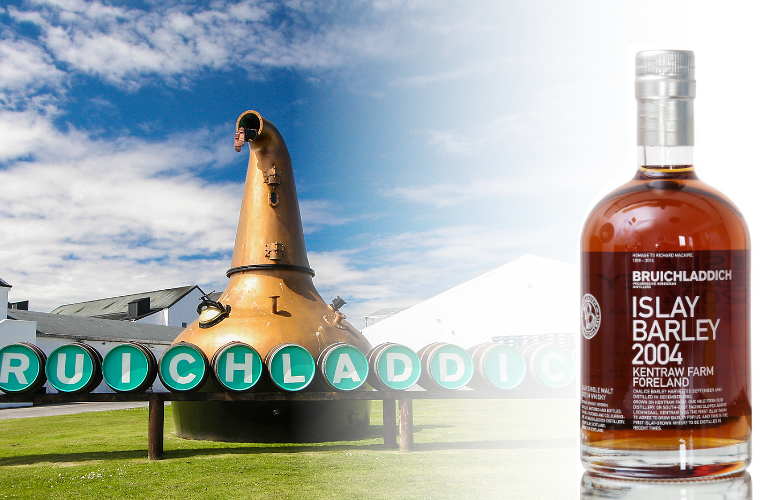Nose: Burnt sugar, raisins, dried red berries, vanilla, and burnt fruit cake.
Palate: Both sweet and sour. Pretty much the same as the nose – definitely heavy on the berries and vanilla. Also quite a solid malty creaminess enveloping the other flavours.
Mouthfeel: Mid-heavy weight, dry, creamy, with an alcoholic tingle right on the tip of the tongue.
Finish: Pretty long. Some heat from the higher than average alcohol. Not as sweet as the palate – some dried cake at the back of the throat. The finish doesn’t last a long time, but the impression the whisky leaves behind lasts for ages – my mouth is still watering quite some time after I finished it despite the flavours having long since died out.
Single variety (of barley), single farm, single vintage, single cask, single malt – there’s a lot of singles in this release from Bruichladdich – a release that was quite ground-breaking when it first came out. Bottled at 57.5% ABV in 500ml bottles with no chill-filtration, and no added colouring, this Feis Ile exclusive release spent all of its 5 years in sherry butt #1667.
Along with the standard release of Bruichladdich Islay Barley 2004, this whisky was the first commercially-released bottle of whisky from Islay, that was made purely from barley grown on Islay, in recent history. The barley was grown at Kentraw Farm, which is less than 2km from the distillery, as part of an experiment that many believed was doomed to fail.
Bruichladdich was the king of starting experiments after the distillery was resurrected by Simon and Mark, and not all of those experiments were successful – in my opinion, the Islay barley experiment was probably one of their most successful; up there with the whisky that we know today as Octomore.
These days, Bruichladdich themselves will readily agree that they are a tad obsessed with barley. A concept that many would think would fit just about every malt distillery in Scotland and elsewhere – but where many distilleries are interested in squeezing every last joule out of their barley in a never ending quest for greater yield, Bruichladdich focuses its energy on the “terroir” of the whisky (a term not often used with whisky, but which the founders of the resurrected Bruichladdich brought with them from their previous lives in the wine trade).
Bruichladdich’s experiments in regards to the terroir of their whisky saw them experiment with many different varieties of barley, grown in multiple locations, fermented and distilled slowly, and entirely aged on Islay itself.
This particular whisky may have been ground-breaking in so many different ways at the time it was released, but the whisky itself is not a complex beast – it’s a simple whisky, showcasing many of the elements that I now find synonymous with the Islay Barley releases (not just from Bruichladdich, but also from Kilchoman); a thick, almost chewy (this release not as much as later releases), and dry mouthfeel, and an avalanche of creamy maltiness.
This release is a rarity amongst Bruichladdich’s Islay Barley range, having been aged in an ex-sherry cask. If you find a bottle of this for sale, or even if you just get offered a nip of it to try, definitely go for it – if not for trying a very solid whisky; at least for sampling both a rare expression, and the start of a lineage.
Would I Drink It Again?
Total Score
Absolutely. This is a stunning whisky made even more desirable by its rarity.

